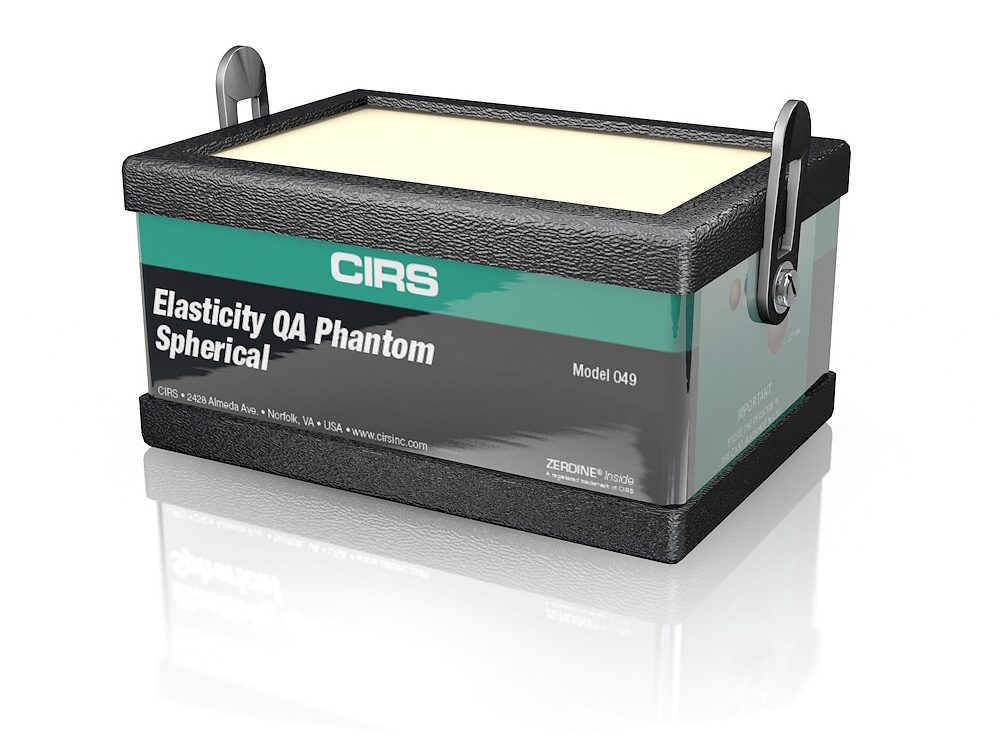
Elasticity QA Phantom Model 049 & 049A
Developed to Provide Users with Acoustic Targets of Discrete Known Stiffness - Four types of lesions with discrete elastic moduli (Contact CIRS for custom moduli) - Compatible with both shear wave and compression elastography - Customized versions available for magnetic resonance elastography - Ensure over ten years of reliable use through reinspection and repair services

Overview
- Developed to Provide Users with Acoustic Targets of Discrete Known Stiffness
- Four types of lesions with discrete elastic moduli (Contact CIRS for custom moduli)
- Compatible with both shear wave and compression elastography
- Customized versions available for magnetic resonance elastography
- Ensure over ten years of reliable use through reinspection and repair services
- Includes best in industry four-year warranty
The Model 049 and 049A Elasticity QA Phantoms are tools developed for both shear wave and compression elastography. These are the only phantoms commercially available for sonoelastography quality assurance. The phantoms contain targets of known stiffness relative to the background material and range in stiffness, diameter and depth.
The Model 049 is a basic QA phantom as it contains two sizes of spheres positioned at two different depths. At each depth there are two spheres that are softer than the background and two that are harder than the background.
For a broader range of target sizes, the Model 049A phantom has stepped mass targets instead of spheres. Each stepped mass consists of six diameters so that you can evaluate the ability to visualize targets that are located at the same depth and have the same relative stiffness but vary in diameter. The Model 049A is housed in the same size container as the original Model 049.
Both phantoms come standard with a four-year warranty and carry case.
Models 049 & 049A are Suitable for:
- Determining dynamic range
- Checking system performance over time
- Training and demonstrating of system features
- Research and development